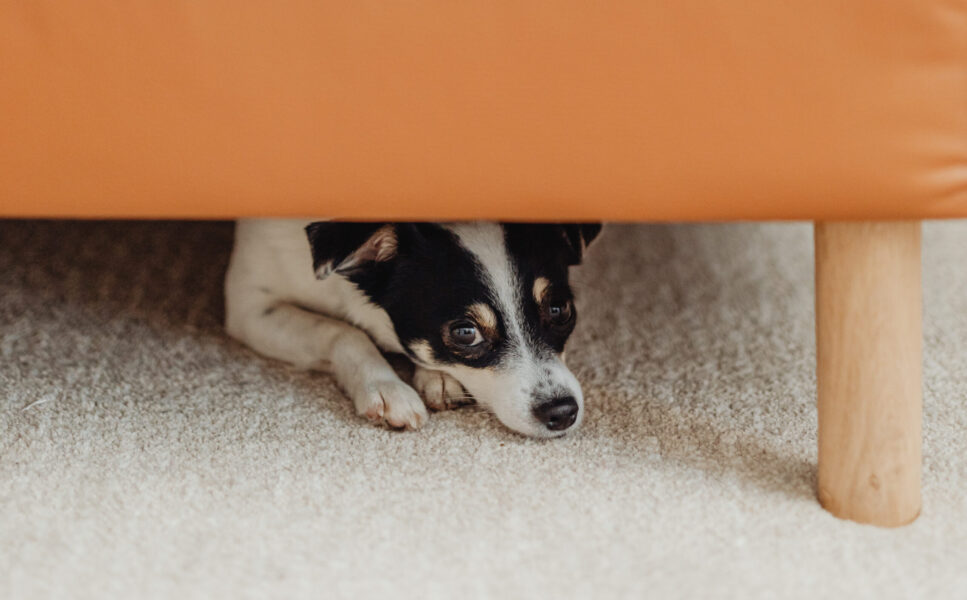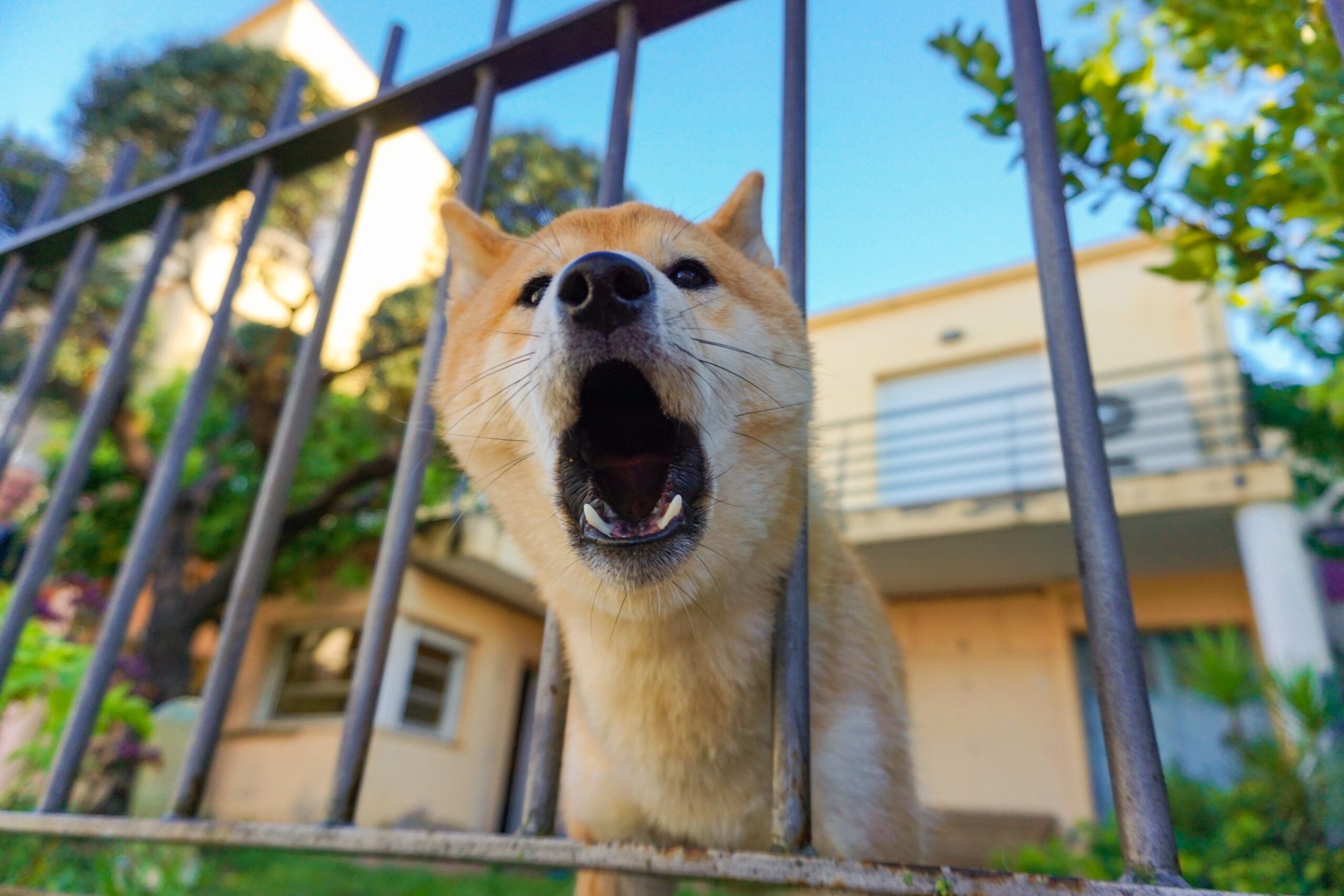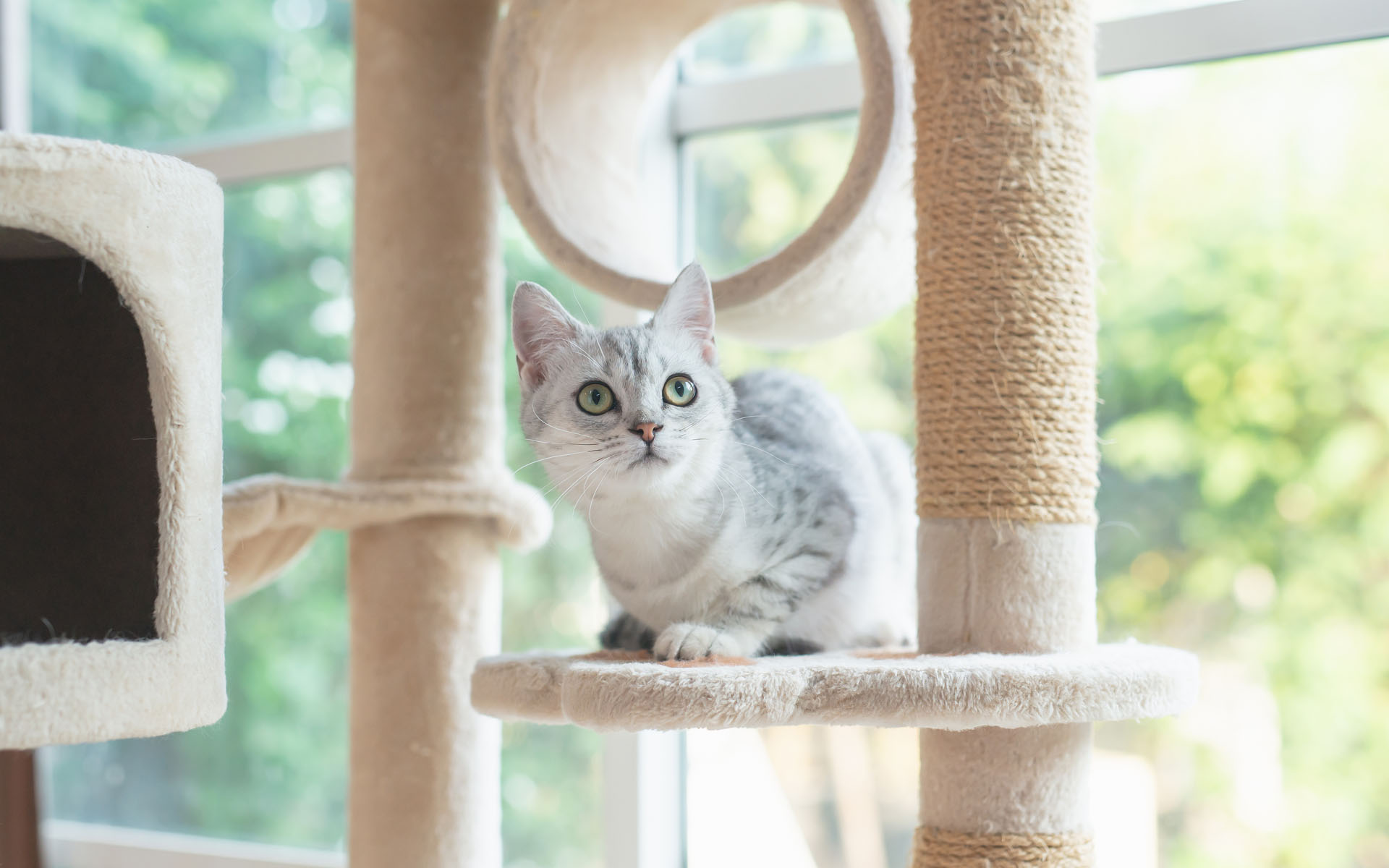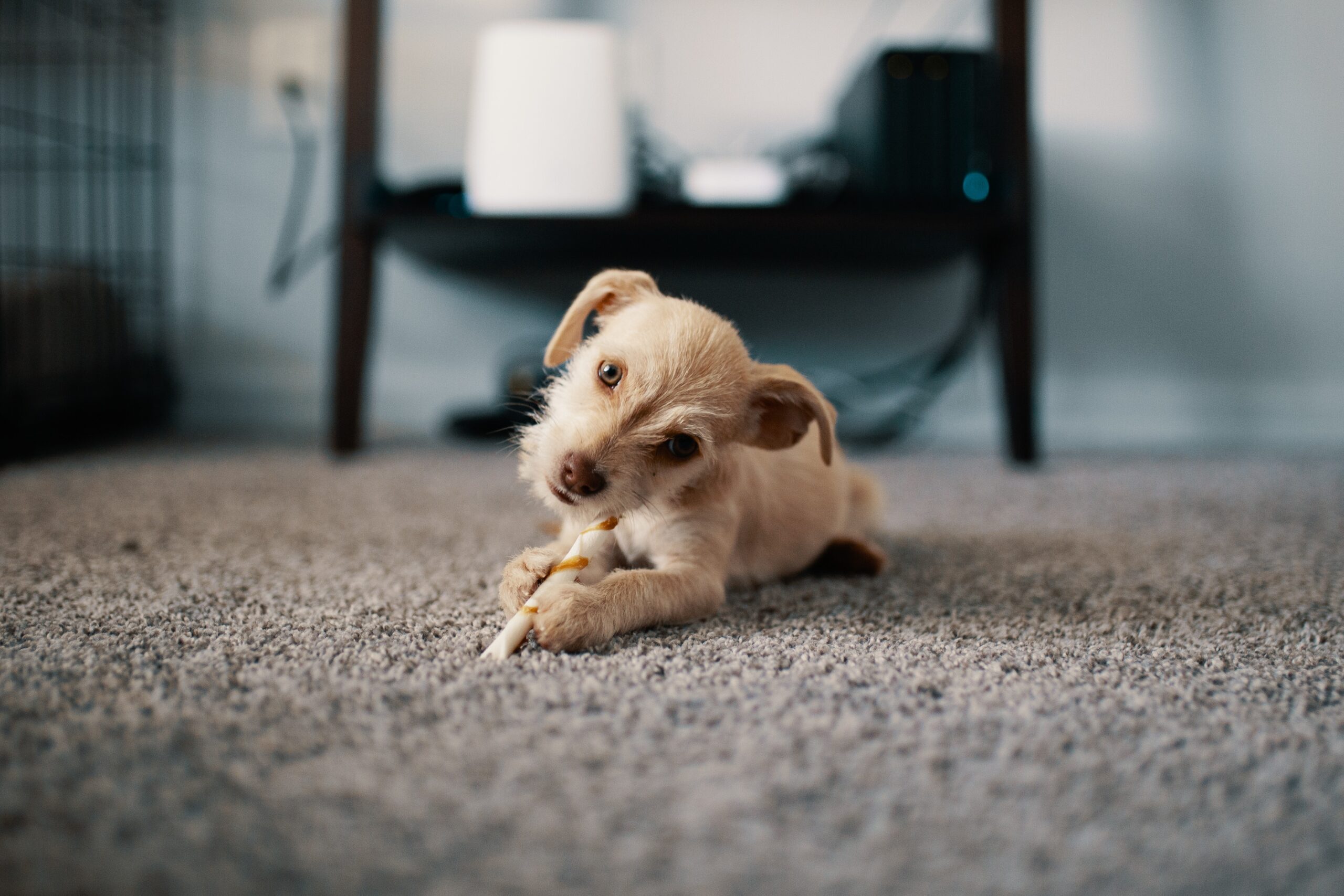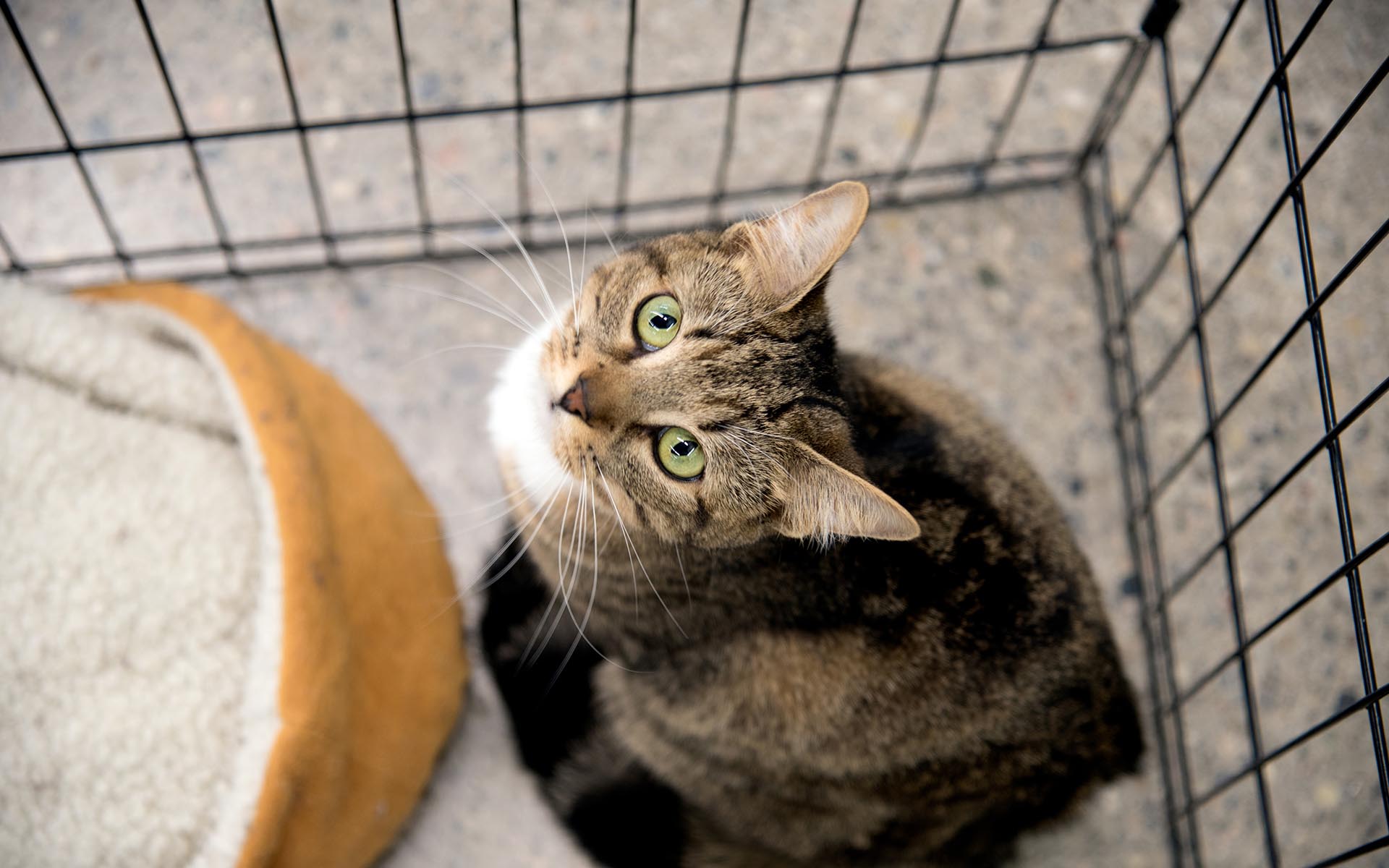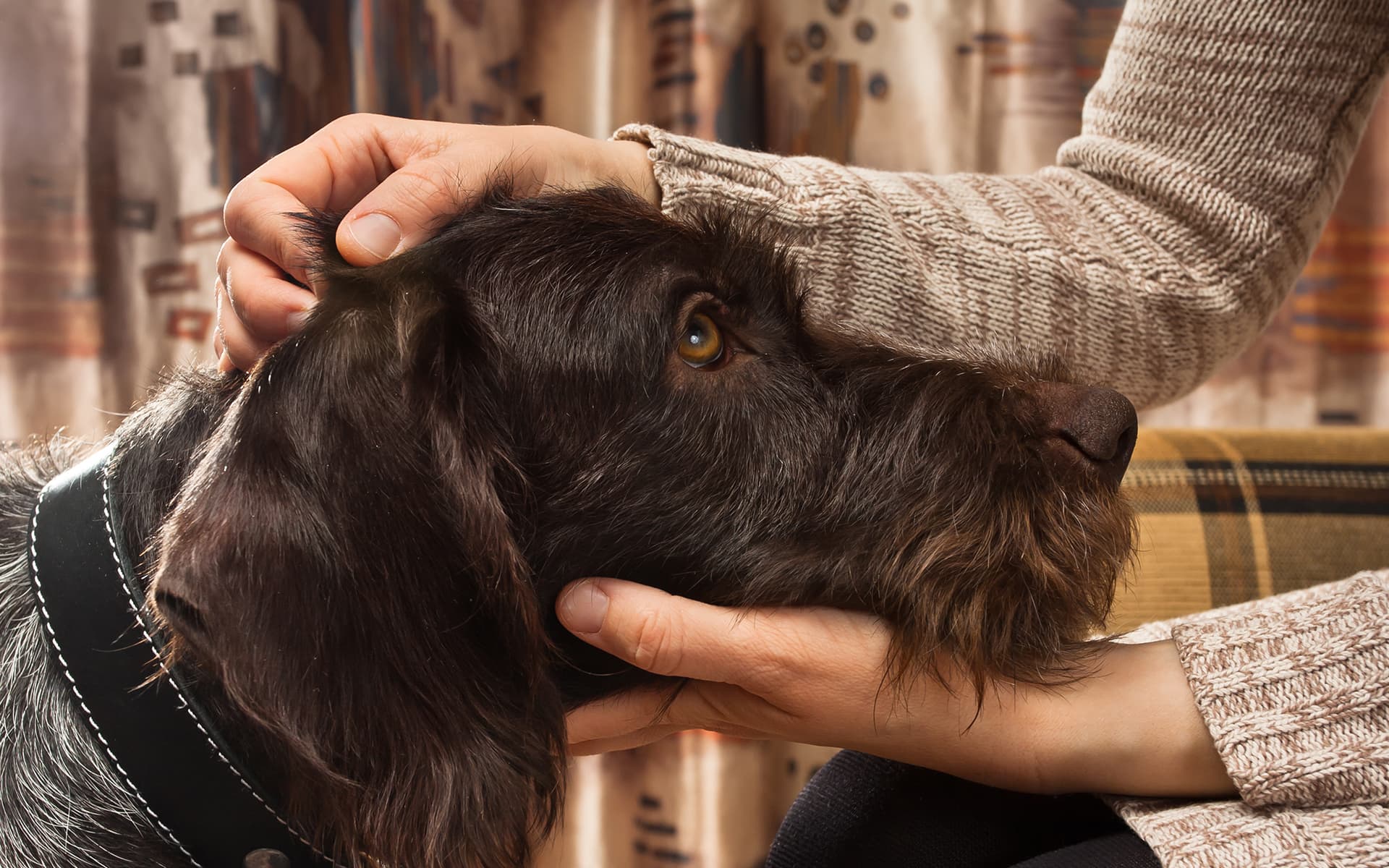1. Your dog tucks their tail between their legs or wags it stiffly.
A relaxed dog is likely to hold their tail in a neutral position or wag it at a steady, leisurely pace. When feeling scared, many dogs will tense and tuck their tail between their legs or hold it tight against their belly. They could also wag it using stiff, choppy movements. While this sign is usually easy to recognize, it may be more challenging for dogs with shorter tails.
2. Your dog’s ears are positioned differently.
If your dog’s ears are typically erect, they may appear pulled back or lowered when your furry friend is anxious. For floppy-eared breeds such as cocker spaniels and basset hounds, focus on the base of the ears to see if you notice any change from their neutral position.
3. Your dog is panting rapidly and whining.
It’s common for dogs to pant at a steady pace when feeling relaxed or on a hot summer day. But if you notice your dog panting rapidly, stopping and tensing up when they perceive a change to their environment, then resuming their frantic panting, they could be experiencing a state of hypervigilance. They may make whining sounds as part of this reaction as well.
4. Your dog’s eyes appear wider than usual.
In many species—dogs included—fear can trigger a widening of the eyes (called “whale eyes”). This enlarges the visual field and makes it easier to spot danger. If your dog’s eyes appear bigger and rounder than usual, with plenty of white visible, they may be scared. Dilated pupils may also occur when your dog experiences an adrenaline rush as part of their fear response. Avoid prolonged direct eye contact with your dog, as they may perceive this as a sign of aggression, or it may heighten their discomfort.
5. Your dog seems agitated, is shaking or frozen.
Learn to recognize your dog’s neutral, normal behaviour and be mindful whenever they suddenly start acting very differently. When feeling scared, some dogs can’t stand still and will frantically pace around as if looking for a way to flee. Others will tread slowly and stiffly or start trembling. They could also become paralyzed with fear.
6. Your dog can’t control their urination or defecation.
The flight or fight response releases hormones and causes muscles to contract. This combination means dogs feeling scared may become unable to control their bladder or bowels and have “accidents” around the house. Some dogs, especially puppies, will urinate when they feel threatened, such as when hearing loud voices or after being scolded. This submissive peeing is an appeasing behaviour designed to diffuse potential danger. Note that some dogs may also urinate inappropriately due to excitement, such as when greeting people.

